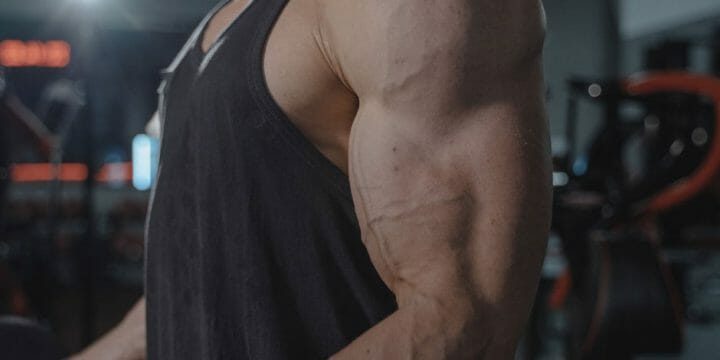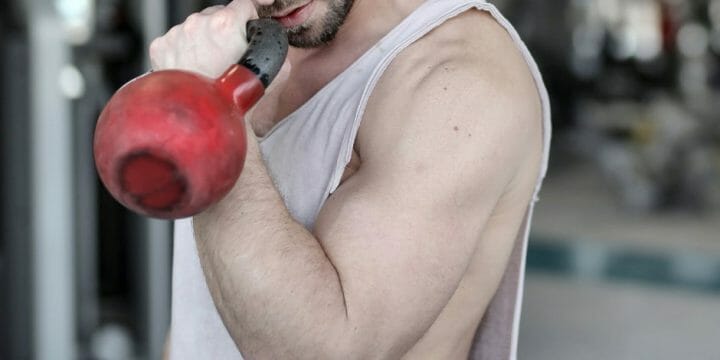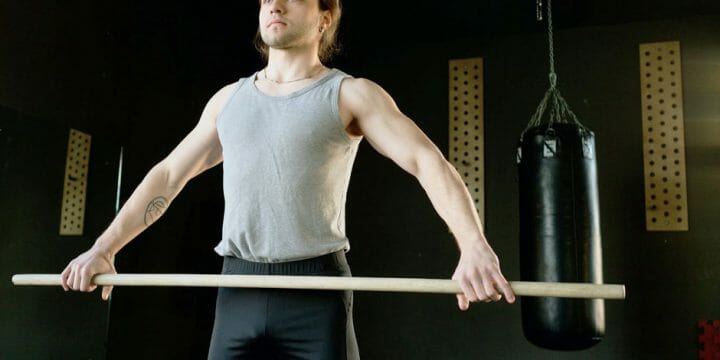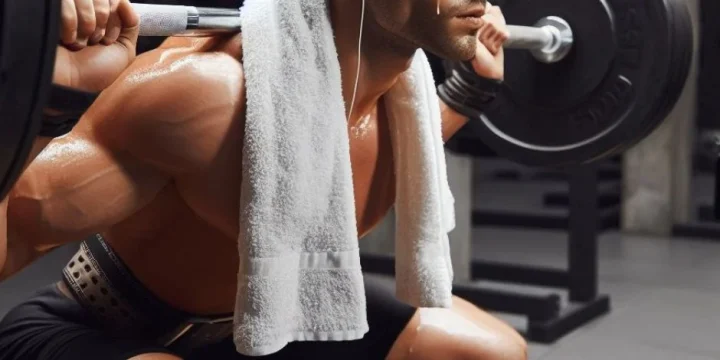Although this multi-functional gear might look a bit scary and confusing at first, it’s fantastic for building strength, increasing power, developing a muscular physique, and even supporting weight loss.
People who have tried it know how engaging and fun a power tower workout can be with various exercises to do using your body weight.
Let’s dive deeper into the potential of a power tower workout and show you all its benefits, examples of exercises with descriptions, comparison, pro tips, and a sample workout.
Quick Summary
- The best power tower exercises for a full-body workout include pull-ups, chin-ups, dips, push-ups, inverted rows, vertical knee raises, and split squats.
- The routine is versatile, suitable for both beginners and advanced users, with options to adjust exercises for different skill levels.
- Split squats, a key component of this routine, have been proven to significantly strengthen glutes, quads, and hamstrings, as reported in a study published in PubMed.
- Personally, I find the power tower to be an invaluable tool for a comprehensive home workout, offering a wide range of exercises in a single piece of equipment.
The Best Power Tower Exercises
1. Pull-Ups
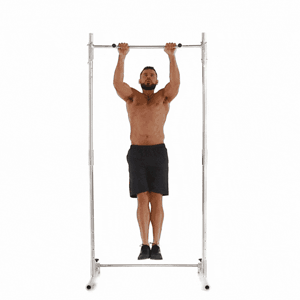
In my experience, pull-ups have been pivotal in enhancing my grip and upper body strength.
Perform them by using your back and arms to lift your body until your chin is above the bar, then lower back steadily.
Maintain a controlled motion, engage your core, and keep your body aligned to maximize effectiveness.
A standard pull-up with a wider pronated grip primarily targets your lats. But different grip widths and types allow you to emphasize biceps and other muscles in your arms or shoulders more.
Beginners lacking enough strength for performing correct technique can do easier assisted variations of pull-ups or use a resistance band.
You May Also Like: Power Tower Workout Routine PDF
2. Chin-Ups
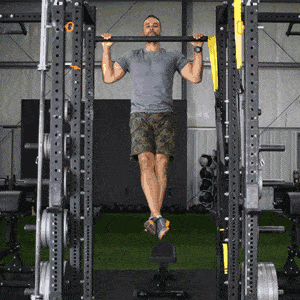
From my personal routine, chin-ups have significantly contributed to developing a strong back.
Chin-ups differ from pull-ups in a way you grab the chin-up bar - with a close, supinated grip so that your hands are facing toward you, not away.
Unlike pull-ups, chin-ups focus on the biceps more than the back muscles, according to the research published in PubMed [1].
You can make both exercises easier by using a resistance band or a partner’s assistance, or harder by adding weight and slowing down the movements.
Learn More: Chin-up vs Pull-up: Key Differences
3. Dips
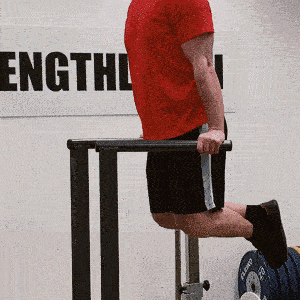
Grasp the dip bars on the power tower dip station with your arms straight, knees bent at 90 degrees, and abs tight.
Slowly bend your elbows to 90 degrees and lower your body without swinging your legs. Pause and return to the starting position.
In my coaching sessions, I've noticed that dips greatly improve arm, shoulder, and chest strength.
Chest dips differ from triceps dips.
For chest-focused dips, lean slightly forward and flare your elbows, squeezing your pecs at the top.
For triceps isolation, maintain a straight upper body with elbows close and arms fully extended. Warm up your elbows to prevent injury.
Beginners may opt for assisted dips or resistance bands for easier execution, while advanced users can increase difficulty with added weights like kettlebells or weighted vests.
Related Articles:
4. Push-Ups
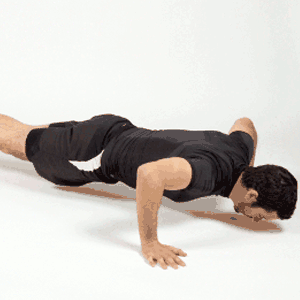
An effective full-body calisthenics or power tower workout can’t be imagined without the push-up in any variation.
Based on my observations, most bodybuilders and other athletes do the push-up to strengthen their chest, triceps, shoulders and improve core stability.
Position the dip handles at a low height, or use the two low parallel handlebars many power towers come equipped with.
The handles take the pressure off your wrists and let you go deeper to stimulate your muscles better.
Grab the handholds in a neutral grip and perform a low incline push-up.
Besides incline, you can do decline push-ups or knee push-ups if you lack strength.
5. Inverted Rows
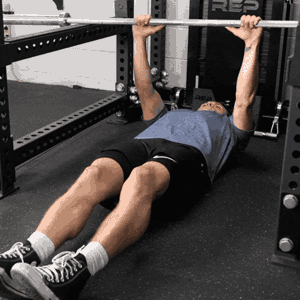
This exercise targets your grip, back, biceps, forearms, core, and stabilizers.
Adjust the dip bars to waist height and grip them overhand, wider than shoulders.
Lie beneath the bars, back leaning until almost parallel to the floor.
Pull up to the handles, keeping a straight line from head to toe.
Pause, then lower yourself with arms fully extended, emphasizing proper form.
6. Vertical Knee Raises

Also known as the Captain’s chair, this is one of the best power tower exercises for abs, because it can engage the abs 212% better than crunches if done correctly without momentum [2].
Stand straight, pressing your back against the padded vertical panel, with your legs freely hanging, arms bent at 90 degrees, and forearms resting on the padded parallel bars (gripping the handles).
In a slow controlled movement without swaying, lift your legs bent at the knees until they’re parallel to the floor.
To increase the rectus abdominis activation and exercise effectiveness, raise the knees toward your chest/shoulders until your hips are fully flexed and tilt the upper body forward slightly at the top.
Pause and slowly lower your legs.
Having integrated vertical knee raises into my workouts, I can vouch for their effectiveness in engaging the abs.
7. Alternating Side Knee Raises
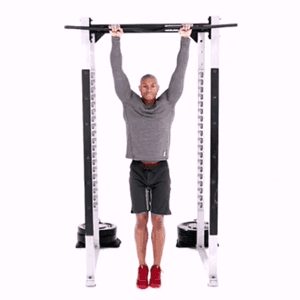
If you want a strong lower back and perfectly shaped abs, you shouldn’t neglect your obliques during your total body workout.
One of the best ways to engage this muscle group is this variation of the previous exercise, a.k.a. oblique twists or hanging oblique knee raises.
Here’s how it differs:
Instead of using the Captain’s chair, you hang from the top horizontal bar, so your muscles are more stretched and engaged.
You twist and alternately rotate your knees to the sides while lifting your legs.
To increase the challenge, you can fix ankle weights or rubber bands to the feet.
8. Alternating Straight Leg Raises
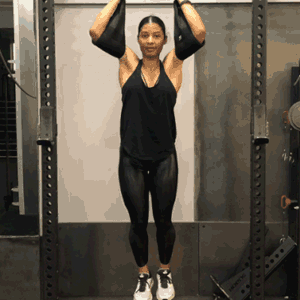
Alternating straight leg raises or flutter kicks involve the same starting position as vertical knee raises.
But it’s more challenging and excellent for strengthening your lower abs and core.
As the name suggests, the difference is that you alternately raise straight legs a bit faster.
To contract your abs properly, try to lift the feet higher than the waist.
You twist and alternately rotate your knees to the sides while lifting your legs.
To increase the challenge, you can fix ankle weights or rubber bands to the feet.
9. Sit-Ups
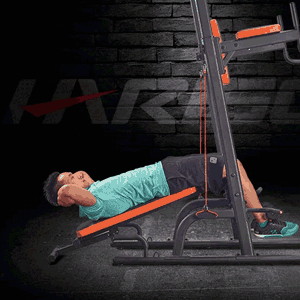
Sit-ups are intense exercises that activate your chest, core, hip flexors, lower back and legs, based on my observations.
Lie flat on your back, with both legs bent at the knees, feet hooked under the power tower footrests/bars, hands crossed on your chest, or placed behind your head that’s tucked forward.
Keeping your back straight, curl your upper body forward until you’re seated (but don’t bring your chest right up to the knees).
Lower back towards the floor without touching it to keep the tension in your abs.
“I don’t count my sit-ups; I only start counting when it starts hurting because they are the only ones that count.”
- Muhammad Ali, Boxer
You can use a fitness mat for more comfort and do different exercise variations, twisting and turning to the sides, or add weights to increase the challenge.
10. Split Squats
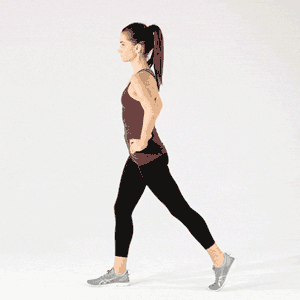
These bodyweight squats strengthen your glutes, quads, and hamstrings, according to the study published in PubMed [3].
Stand with your back straight, core tight, and chest up, relying on one leg while keeping its hip, knee, and ankle in line.
Place the other foot behind you on the low power tower horizontal bar.
Slowly squat until your front knee is bent at 90 degrees and your back knee gets close to the floor.
Pause, then carefully return to the start, ensuring your knee doesn’t cave in.
Alternate legs after completing your set.
For beginners, maintaining balance in these split squats is key; avoid looking down to stay steady. Experienced users can increase intensity by adding weights.
Split squats have been a staple in my leg workouts, and I've seen great improvement in my clients' glute, quad, and hamstring strength.
Related: Myo-Reps Workout
Sample Full-Body Power Tower Workout

A simple power tower workout routine that effectively activates almost every lower and upper body muscle group could consist of the following bodyweight exercises.
Having developed various full-body power tower workouts, I've seen firsthand their effectiveness in activating both lower and upper body muscle groups.
- Warm-Up - the beginning of every workout should include 5-10 minutes of warming up all your muscles, ligaments, and joints to prepare the whole body for the training and reduce the risk of strains, sprains, and other injuries. You can skip a rope, perform jumping jacks or other dynamic movements and stretches that will get the blood flowing, increase your heart rate, and make you sweat a bit.
- Pull-Ups - 3-4 sets of 15-20/max reps. Those who can easily perform the recommended sets of 15+ reps with the proper technique could add extra weight to make the exercise more challenging.
- Push-Ups - 4 sets of 15-25 reps.
- Dips - 4 sets of 15-25 reps.
- Vertical Knee Raises - 3 sets of 30-40/max repsFor an additional challenge, do rotational leg lifts.
- Inverted Row - 3-5 sets of 20-25/max reps.
- Split Squats - 2 sets of 20-25 reps.
- Sit-Ups - 3 sets of 25-30/max reps.
Stretching all your muscles after exercising is necessary to relax them and prevent cramps and injuries.
Tips:
The quality of reps matters more than the number, so ensure you focus on the right technique, performing slow, controlled movements.
“Remember that form is crucial. Don’t sacrifice technique just to get a few extra reps in. Take some extra rest instead.”
- Christian Finn, Personal Trainer
Adjust the workout to your level: if 3 sets of 10 reps are too challenging, do fewer reps or simpler variations. For more intensity, add weights and increase reps.
Keep rest brief between exercises, ideally 60 seconds, but no more than 2 minutes. Customize sets, reps, and rest to fit your goals and fitness level.
Consistency is key; aim for 2-3 sessions weekly, with rest days in between. Vary the exercises to keep it interesting and prevent muscle overtraining.
Related Article: How Many Excersises per Muscle Group Should You Exactly Do?
What Is a Power Tower Used For?
A power tower is used for performing a variety of bodyweight exercises that can emphasize and strengthen different lower and upper body muscle groups, depending on your body position, grip, and technique variation.
The Benefits of Power Towers

With multiple bars combined at different heights and angles, a power tower can provide a solid, consistent, full-body calisthenics or bodyweight workout. But unlike standard calisthenics training, power tower workouts ensure additional stability and support.
You can enhance your cardiovascular fitness, build functional strength, boost power, increase calorie burn, improve flexibility, muscle coordination, and overall body composition by doing pull-ups, push-ups, dips, and other compound exercises on a power tower [4].
The Power Tower is not only a versatile piece of equipment for a range of exercises but also a space and cost-efficient choice for home gyms, making it an ideal investment for fitness enthusiasts looking to maximize their workout space.
Even better:
All these movements are natural and gentle on your joints and muscles. So, you can train safely, effectively focusing on particular body muscles while avoiding injuries that often happen with dumbbells, barbells, and other commonly used heavy-duty gym equipment.
Elevate your fitness routine with advanced Power Tower exercise variations, adding complexity and intensity to standard workouts for those looking to push their limits further.
The power tower is versatile, offering a range of exercise variations for all fitness levels, ideal for beginners.
It eliminates the need for other equipment, enabling a comprehensive workout at home.
A power tower is a cost-effective, time-efficient addition to your daily routine.
Its portability and compact design make it suitable for small spaces, providing stability and convenience for home workouts.
References:
- https://pubmed.ncbi.nlm.nih.gov/21068680/
- https://www.acefitness.org/getfit/studies/bestworstabexercises.pdf
- https://pubmed.ncbi.nlm.nih.gov/20231745/
- https://www.acefitness.org/resources/pros/expert-articles/5811/5-benefits-of-compound-exercises/
About The Author
You May Also Like

